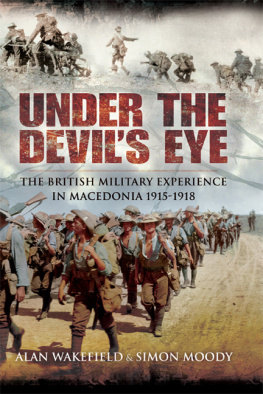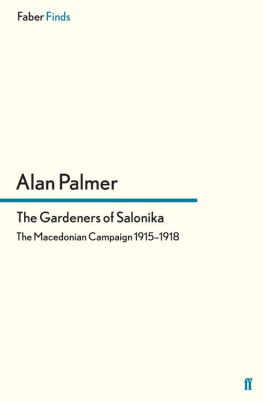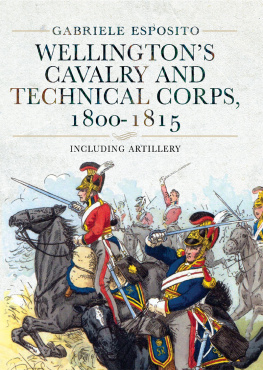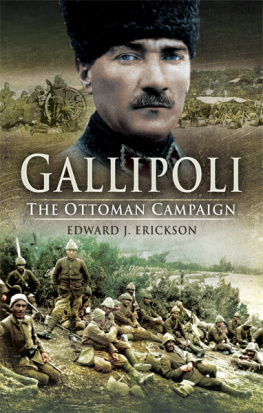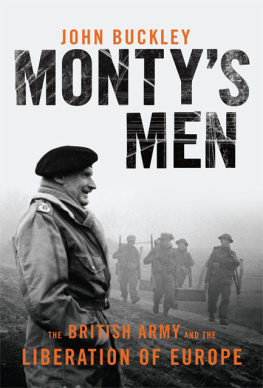

First published in 2004 by
Sutton Publishing
Republished in this format in 2011 by
Pen & Sword Military
an imprint of
Pen & Sword Books Ltd
47 Church Street
Barnsley
South Yorkshire
S70 2AS
Copyright Alan Wakefield and Simon Moody 2011
ISBN 978 1 84884 461 2
eISBN 9781844682669
The right of Alan Wakefield and Simon Moody to be identified as Authors of this Work has been asserted by them in accordance with the Copyright, Designs and Patents Act 1988.
A CIP catalogue record for this book is available from the British Library.
All rights reserved. No part of this book may be reproduced or transmitted in any form or by any means, electronic or mechanical including photocopying, recording or by any information storage and retrieval system, without permission from the Publisher in writing.
Typeset in Ehrhardt by Phoenix Typesetting, Auldgirth, Dumfriesshire.
Printed and bound in England by CPI UK
Pen & Sword Books Ltd incorporates the Imprints of Pen & Sword Aviation, Pen & Sword Maritime, Pen & Sword Military, Wharncliffe Local History, Pen and Sword Select, Pen and Sword Military Classics, Leo Cooper, Remember When, Seaforth Publishing and Frontline Publishing.
For a complete list of Pen & Sword titles please contact
PEN & SWORD BOOKS LIMITED
47 Church Street, Barnsley, South Yorkshire, S70 2AS, England
E-mail: enquiries@pen-and-sword.co.uk
Website: www.pen-and-sword.co.uk
Contents
Acknowledgements
The production of this book has proven to be a long-term project. During this time the authors were greatly assisted by a number of people, in both a professional and private capacity. In particular, we wish to acknowledge the kind assistance of copyright holders of material reproduced in this book. Without their agreement this publication would not have been possible.
We would also like to express our gratitude to James Robinson who, despite his heavy workload, took the lead in proofreading and commenting on our initial manuscript. In this task he was ably assisted by Niall Cherry, Phil Dutton and Mike OConnor, who cast an eye over particular chapters.
From public institutions holding archival collections we would like to thank current and former work colleagues at the Imperial War Museum, National Army Museum and Royal Air Force Museum. From the former organisation we are indebted to Rod Suddaby, Simon Robbins and Tony Richards of the Department of Documents and Peter Hart of the Sound Archive, for assisting with access to a wealth of primary source material held by the Museum. Tony in particular bore the brunt of our many requests for letters, diaries and memoirs, as well as keeping us up to date with regard to new collections reaching the archive. At the National Army Museum we would like to thank the Director, Dr Alan Guy, Dr Peter Boyden (Assistant Director Collections), Dr Alastair Massie (Head of Archives, Photographs, Film & Sound), Michael Ball (Head of Printed Books), Ian Jones (Head of Photography) and Keith Miller (Head of Weapons, Vehicles & Equipment). Additionally, we thank the Trustees of that institution for allowing us to use the Jourdain and Drury collections amongst others. From the Royal Air Force Museum the assistance of Peter Elliott, Nina Burls and Gordon Leith of the Department of Research and Information Services was particularly appreciated, as was that of Andy Renwick (Curator of Photographs), and Andrew Cormack (Keeper of Visual Arts, Medals & Uniforms).
Thanks must also go to staff of the National Archives, Wellcome Library and Special Collections at the Brotherton Library, University of Leeds, for facilitating access to the collections they hold. From other institutions we would like to single out Mr T. Ball (London Irish Rifles Museum), Lieutenant Colonel Darroch (Royal Hampshire Regiment Museum), John Dart (The Royal Regiment of Wales Museum), Peter Donnelly (Kings Own Regiment Museum), Stuart Eastwood (Museum of the Border Regiment), Peter Francis (Commonwealth War Graves Commission), the late Richard Jeffs (Ox & Bucks Light Infantry Museum) and Craig McGuicken (Somme Heritage Centre) for their assistance. The Trustees of all of the above mentioned museums are also to be thanked for allowing us to reproduce material from their collections.
For permission to quote from a number of published works we would like to thank the Random House Group, especially Mrs Catherine Trippett (Permissions Manager) who undertook the searches of company records. We are also indebted to Mr John Weatherlake for granting us permission to reproduce extracts from Major Owen Rutters epic poem Tiadatha , without inclusion of which any book on the British Salonika Force would be incomplete.
We were also fortunate in being given access to material held by a number of private individuals. For this privilege and numerous kind offers of support and encouragement the following people deserve mention: Philip and Janet Barnes, Peter Barton, Mrs Christine Bignold, Tim Bowler, Mr A. Bridges (Middlesex Yeomanry Association), Mr W. Chalkley, Otilia Ciobotaru, Oliver Fallon, Bill Fowler, Mr W.E. Goodwin, Mrs Tessa Harfield, Dr Michael Haward and the late Group Captain David Haward, Major Neville Holmes, Mrs Anne Honour, Michael Longley, Alan and Ian Lyster, Martin Marix Evans, George Fish, Mac McIntyre, Mrs J. Miles, Chris Morton, Kathy Stephenson, Trevor Tasker, Dr Ann Turrall, Philip Waterman, Major Hugo White, John White, Kate and Martin Wills and Dr Mary Wilson.
That we were able to make research trips to the former British sectors of the Salonika Front greatly assisted our understanding of the many accounts studied during the writing of this book. The assistance of the following people was greatly appreciated in giving us a chance to walk the ground. Andrew Whitmarsh accompanied us on three visits, playing a full part in tracking down many obscure locations and keeping a cool head amongst the drivers of Thessaloniki! In Greece, our good friends Apostolos Nalmbantis, Colonel Vasilios Nikoltsios and Adrian Wright have given much time to assist us, suppling very useful local knowledge, as did Michael and Spyros Tsartsidis, who run a private military museum in the town of Sidirokastro. In the Former Yugoslav Republic of Macedonia (FYROM) we have received similar help from Romeo Drobarov and Simon Roberts, both of whom have developed a keen interest in the battlefields at Doiran and Kosturino. Romeo is now a key player when it comes to visiting Doiran and each time we return he, along with trusty guides Binko and Gele, always have new discoveries to show. To enable our initial visits to sites along the Greece-FYROM border, the success of which went some way to ensuring the completion of this project, we would like to thank Lina Ognenovi of the FYROM Embassy in London and Captain K. Kyriakidis, Greek Military Attach in London, both of whom liaised between ourselves and their respective ministries of defence and the interior. Our appreciation goes out to these government departments for supplying us with vehicles and a military escort. From the latter we are particularly indebted to Major Sotiris Giannikopoulos of the Greek Army and Lieutenant Milov and interpreter Boris Markov of the FYROM Army, who were always willing to visit just one more hilltop or trench line!
Personal Acknowledgements
Simon: I would like to thank my parents and family for giving me the opportunities to make the book possible. My appreciation also goes out to friends and colleagues who politely listened, with apparent interest, to yet another Salonika observation or research trip anecdote and to Katherine, whose understanding, love and support helped get me through the experience.
Next page
